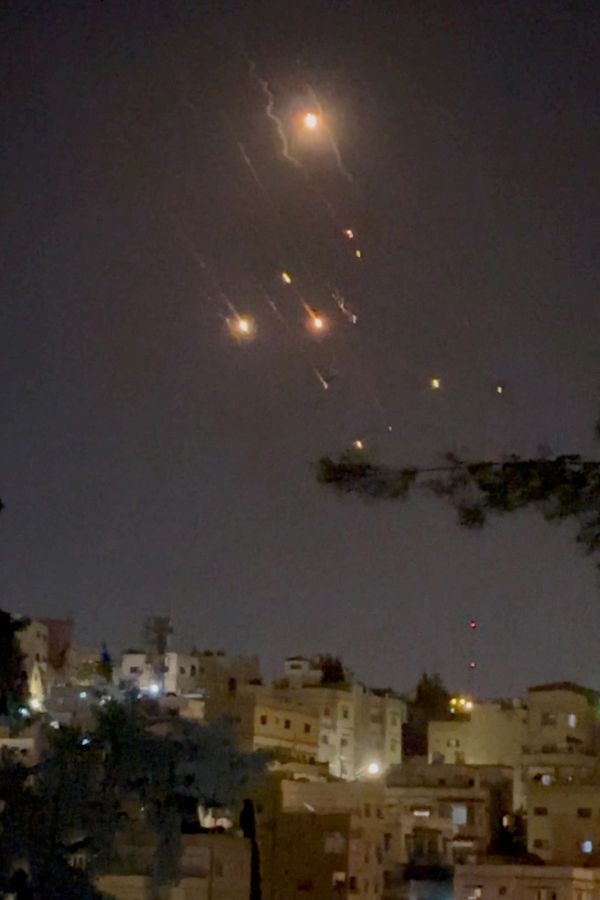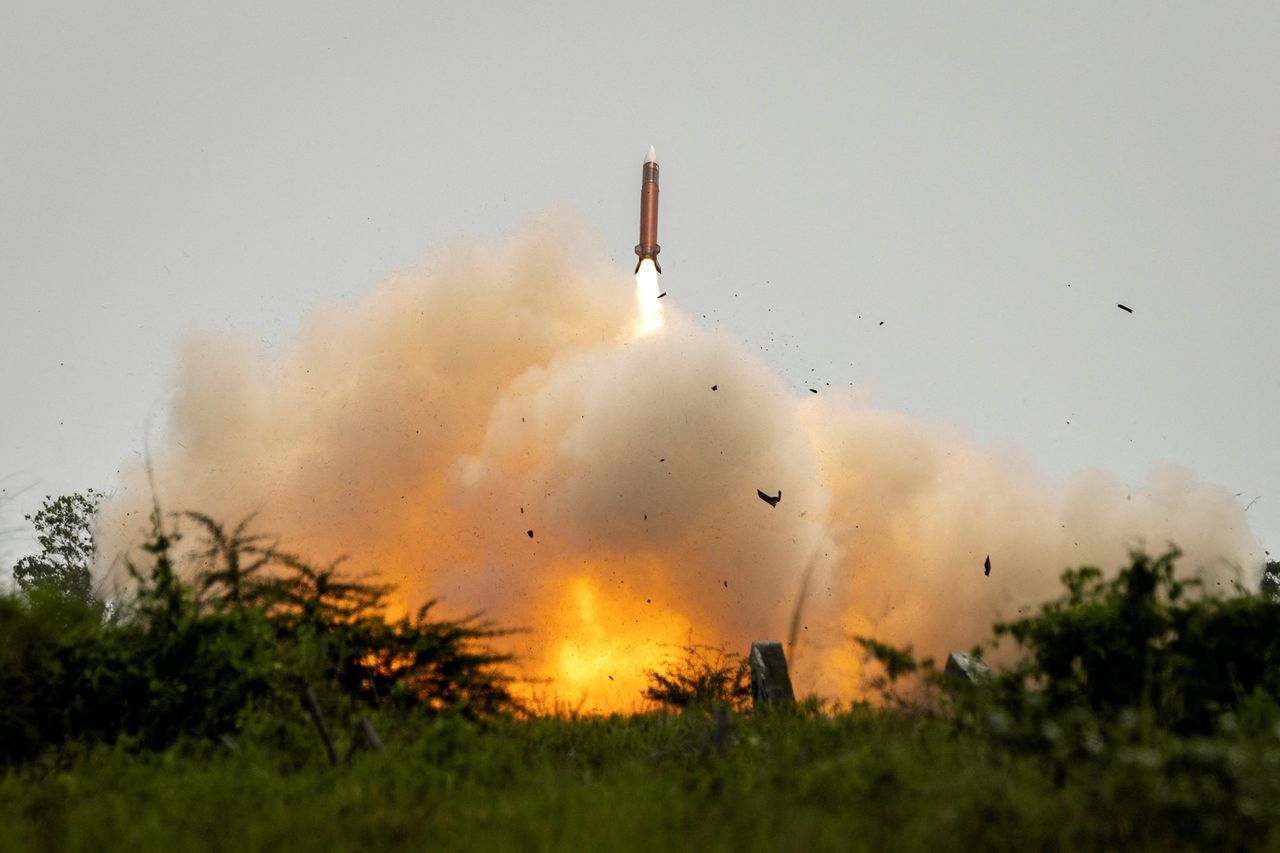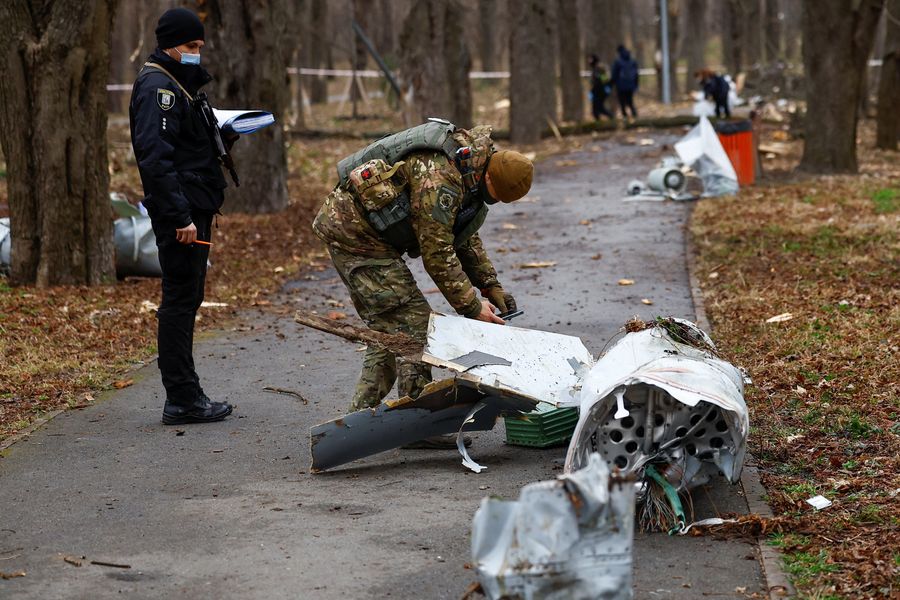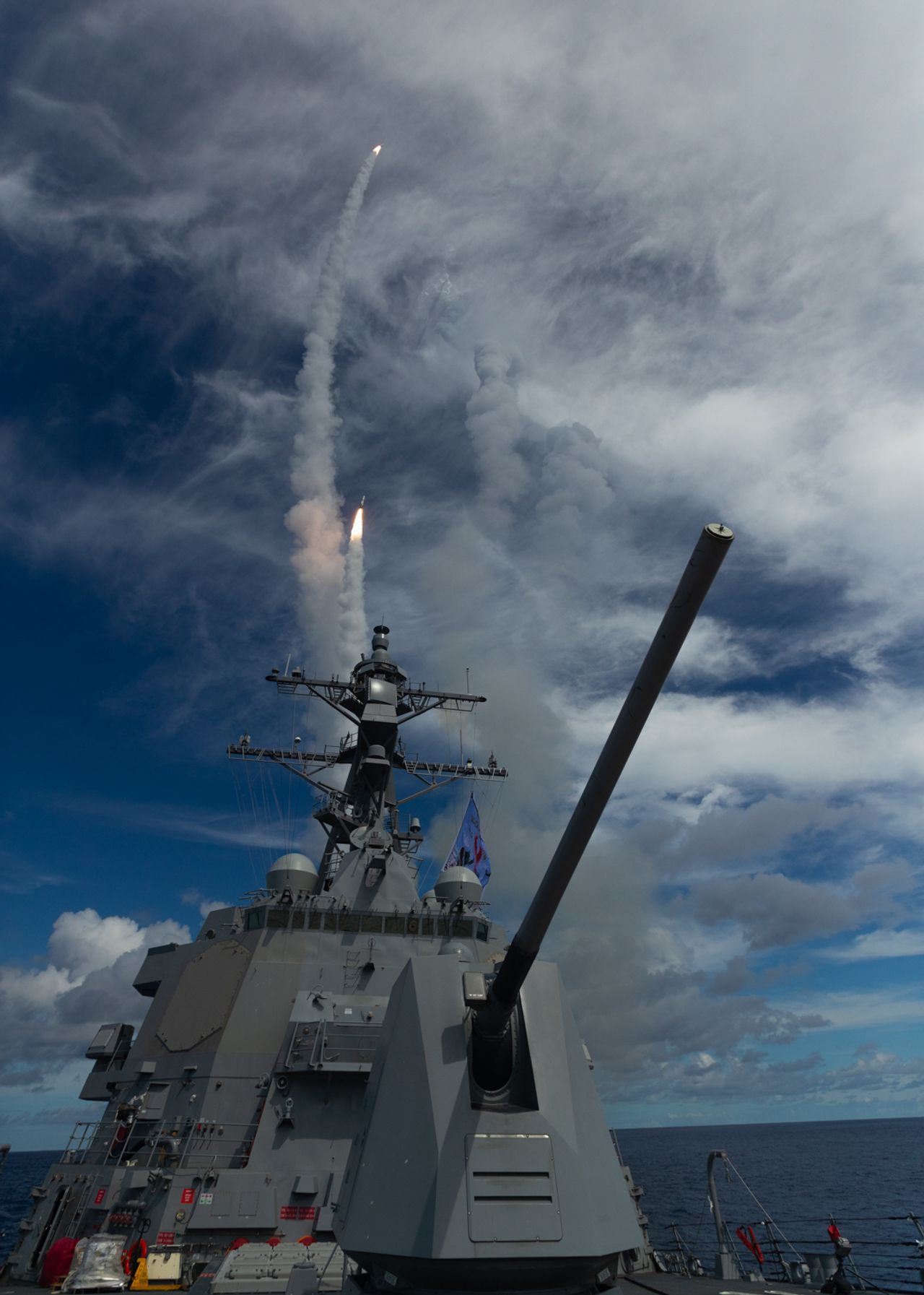The near-complete defeat of Iran’s drone-and-missile barrage against Israel on Saturday marked a success for air–defense systems, but was also a sobering reminder that weapons capable of intercepting these sorts of attacks are in short supply.
Countries around the world have moved to bolster their air defenses in recent years, spurred by Russia’s war on Ukraine, concerns about tensions in the Asia-Pacific region and renewed conflict in the Middle East. Yet the companies that produce air-defense systems are struggling to meet the surging demand, and countries ordering the technology are grappling with long waits and high costs.
After years of underinvestment, a global scramble for missiles has meant it now takes around two years or more to deliver some air-defense interceptors. A lack of some components, like rocket motors, contributes to that lag.
“I am concerned that we’ve taken a bit of a holiday and that we are playing some catch-up here,” John Hill, deputy assistant secretary for space and missile defense told lawmakers last week.
Air-defense systems—and the missiles they fire—typically take a long time to make and often cost far more than the targets they aim to shoot down, particularly in the case of drones. The potential for swarms of small autonomous drones pose further challenges to today’s equipment, and new technologies to address these evolving threats are still under development.

Iran’s attack on Israel over the weekend stood out for its sheer scale: more than 120 ballistic missiles, over 30 cruise missiles and approximately 170 drones. The Israelis intercepted most of the ballistic missiles using Arrow air–defense systems, senior U.S. officials said. Around four to six missiles were shot down by U.S. destroyers, and one was taken out by a U.S. Patriot air-defense battery.
U.S. fighters shot down most of the drones, though some were destroyed by British, French and Israeli aircraft.
The defeat of the Iranian barrage was possible because of Israel’s sophisticated, multilayered air-defense system and assistance provided by the U.S. and other Western and Arab partners. But Israel would likely struggle if it was faced with many waves of attacks, such as Ukraine has experienced in more than two years of its war with Russia, defense analysts say.
“Israel seemed to do pretty well, but the downside is that a large number of interceptors were expended in the process,” said Tom Karako, the director of the Missile Defense Project at the Center for Strategic and International Studies, a U.S. think tank. “It’s certainly the case that strains on magazine inventory is going to be a problem, for everybody.”
Over the past couple of years Ukraine has largely relied on Western-provided equipment to intercept more than 2,000 ballistic, cruise and other types of missiles, as well as thousands of drones. However, Kyiv’s interception rates have been falling as it runs out of missiles.
This week, Ukrainian President Volodymyr Zelensky told PBS that Russia was able to destroy a major power plant recently because Kyiv’s military forces ran out of missiles to defend it. Russia fired 11 missiles, and Ukraine only had seven to counter them.
The West, though, doesn’t have large quantities of missiles and defense systems left to give Ukraine. There is already a long waiting list for Patriots, which are designed to take down ballistic missiles. For example, Switzerland ordered five Patriot batteries in 2022, but it will take six years before the first one arrives and another year before it is operational, the government said.
The systems also aren’t cheap: Each Patriot battery, which can be armed with 32 missiles, costs around $1 billion.

The cost of Israel’s intercepting about half of the Iranian barrage this weekend was estimated at 2.1 billion Israeli shekels, or more than $550 million, according to Yehoshua Kalisky, a researcher at the Institute for National Security Studies, a Tel Aviv-based think tank.
Western officials worry that costs will only rise, as they have to shoot down cheaper drones with million–dollar missiles, and that expense will increase if adversaries employ swarms of these unmanned aerial vehicles.
Russia is already employing that strategy, firing long-range drones at Ukrainian cities to waste sparse Ukrainian air-defense missiles. Ukrainian officers complain they lack equipment to contain the constant barrage of drones on the front line.
Pentagon officials have said they want production of counterdrone defenses stepped up dramatically, a recognition that firing multimillion-dollar missiles to down something that costs just thousands of dollars is unsustainable.
“You can’t kill cheap drones if you don’t have cheap interceptors,” Chris Brose, chief strategy officer at Anduril Industries, told reporters at a recent gathering to unveil the company’s new autonomous interceptor, Roadrunner.

Small drones, which have played a greater role in Ukraine, present unique challenges to traditional defense systems.
“It is harder to pick out the smaller ones than the bigger ones. You can see a camel from a distance but probably not a mouse,” said Aaditya Devarakonda, chief executive of Dedrone, a startup building technology to thwart drones by jamming their communication links. “The detectability is a big, big, big problem.”
U.S. forces have relied largely on its ship-based Aegis missile-defense system to protect their own vessels and commercial shipping in the Red Sea, as well as the Phalanx system, which uses machine guns to blast incoming drones.

There isn’t yet a good technical solution to counter a swarm of inexpensive, autonomous drones, military and industry officials say.
The U.S. and Israel are now testing microwave and laser counterdrone systems developed by private companies that offer the ability to keep firing for as long as they have power. That would, in theory, allow the system to help take down a swarm of drones without running out of ammunition.
Epirus, an American startup that specializes in high-powered microwave weapons, said it could have some of its systems fielded in the Middle East by the summer if the U.S. Army gives the go-ahead, and 10 by the end of the year. The Raytheon unit of RTX, one of the largest American defense companies, has a U.S. military contract for high-power microwave counterdrone systems, with the first prototypes scheduled for delivery next year.
These new systems haven’t been battle tested and are limited in range, but advocates of the technology say they offer the best defense against drone swarms.
“In future conflicts, counterdrone systems will likely require very energy-intensive, directed energy or laser-weapon systems to be able to do it,” said Thomas Hendrix, a venture capitalist with Decisive Point Group and a former officer in the U.S. Army Special Forces. “I haven’t seen that many viable solutions out there.”
Anat Peled and Michael R. Gordon contributed to this article.
Write to Alistair MacDonald at [email protected], Doug Cameron at [email protected] and Heather Somerville at [email protected]
News Related-
Russian court extends detention of Wall Street Journal reporter Gershkovich until end of January
-
Russian court extends detention of Wall Street Journal reporter Evan Gershkovich, arrested on espionage charges
-
Israel's economy recovered from previous wars with Hamas, but this one might go longer, hit harder
-
Stock market today: Asian shares mixed ahead of US consumer confidence and price data
-
EXCLUSIVE: ‘Sister Wives' star Christine Brown says her kids' happy marriages inspired her leave Kody Brown
-
NBA fans roast Clippers for losing to Nuggets without Jokic, Murray, Gordon
-
Panthers-Senators brawl ends in 10-minute penalty for all players on ice
-
CNBC Daily Open: Is record Black Friday sales spike a false dawn?
-
Freed Israeli hostage describes deteriorating conditions while being held by Hamas
-
High stakes and glitz mark the vote in Paris for the 2030 World Expo host
-
Biden’s unworkable nursing rule will harm seniors
-
Jalen Hurts: We did what we needed to do when it mattered the most
-
LeBron James takes NBA all-time minutes lead in career-worst loss
-
Vikings' Kevin O'Connell to evaluate Josh Dobbs, path forward at QB
